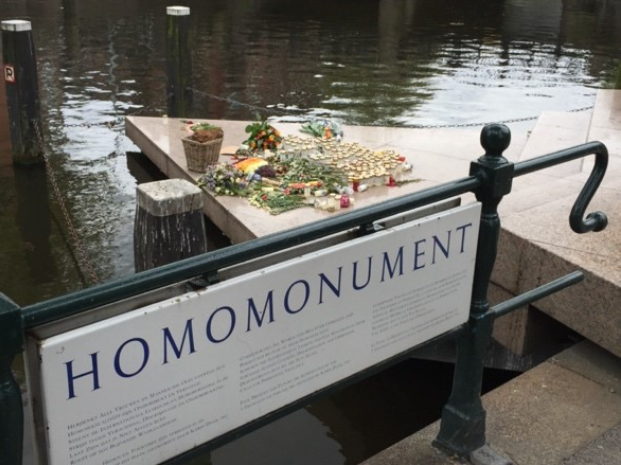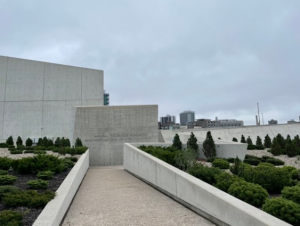9.4 Genocide Memorials, Commemoration & Remembrance

“Genocide is an internationally recognized crime where acts are committed with the intent to destroy, in whole or in part, a national, ethnic, racial, or religious group” (United States Holocaust Memorial Museum, n.d., para. 1).

Genocide memorials take a number of forms, including: memorial museums (e.g., Unites States Holocaust Memorial Museum in Washington DC); carefully preserved historical landmarks (e.g., Anne Frank House in Amsterdam, The Netherlands; the Nazi death camp Auschwitz-Birkenau); monuments (e.g., The Tsitsernakeberd Memorial Complex in Yerevan, Armenia, see image below; The Homomonument in Amsterdam, The Netherlands, see image above and to the right); and designed physical spaces (e.g., The National Holocaust Museum in Ottawa, Canada, see image below; The Berlin Holocaust Memorial in Germany, view through link at bottom of page). These memorials, in their various forms, are “dedicated to historical events of mass suffering” (Lachenro, 2017, p. 1). They work to increase public knowledge regarding the atrocities committed against specific targeted groups of people (see Chapter on Genocide). Some, such as the Kigali Genocide Memorial in Rwanda, also serve as the final resting places for victims of the genocide (KGM.rw). Despite the uniqueness of each, genocide memorials are meant to serve as agents of reflection and dialogue (Bonder, 2009), “to function as a form of symbolic reparation for the harm done,…and a guarantee of its non-reoccurrence” (Whigham, 2017, p. 107). The knowledge and information shared, the visceral experience of visiting memorials and participating in witnessing atrocities inflicted on humans by other humans, the commemoration and honouring of lives lost, are all meant to “remind, warn, advise, and call to action” (Bonder, 2009, p. 67) and to ensure we never forget.


Click the following links below to learn more about memorials to genocide:
On Memory, Trauma, Public Space, Monuments and Memorials
Ständige Konferenz der Leiter der NS-Gedenkorte im Berliner Raum

